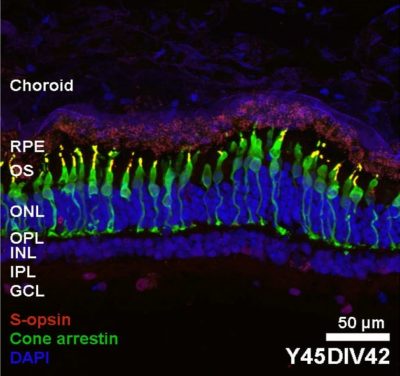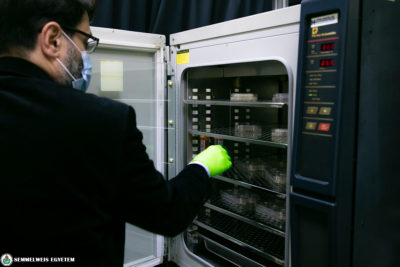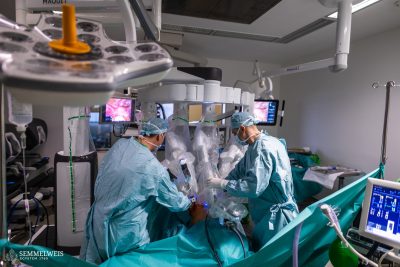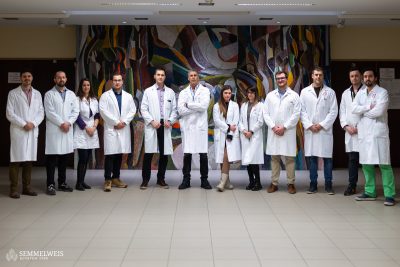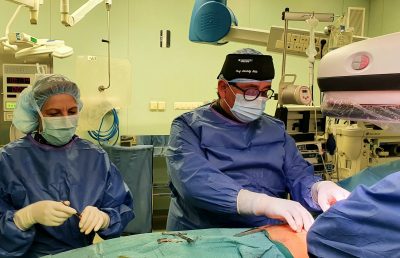According to a study published in Science on 5th June, the ability of snakes to sense infrared thermal radiation may help develop a mechanism that could heal the retina and even restore vision. A human retina model developed by the Retina Laboratory of Semmelweis University’s Department of Anatomy, Histology and Embryology and its related knowledge transfer have greatly contributed to the publication.
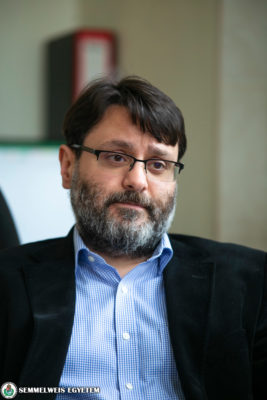 “The human retina is an organ difficult to do research on, thus it is not thoroughly known. In the past decade it has become clear that conclusions drawn from research result of animal studies cannot be directly applied to the human retina. Therefore, experiments on human tissue are essential, however it is difficult to obtain human tissues of the right quality. To address the problem, the Retina Laboratory team of Semmelweis University’s Department of Anatomy, Histology and Embryology have developed a unique tissue culture procedure that allows retina tissue left over from organ donation to survive up to 14 days with good histological retention.”, said Dr. Arnold Szabó, assistant professor and project leader.
“The human retina is an organ difficult to do research on, thus it is not thoroughly known. In the past decade it has become clear that conclusions drawn from research result of animal studies cannot be directly applied to the human retina. Therefore, experiments on human tissue are essential, however it is difficult to obtain human tissues of the right quality. To address the problem, the Retina Laboratory team of Semmelweis University’s Department of Anatomy, Histology and Embryology have developed a unique tissue culture procedure that allows retina tissue left over from organ donation to survive up to 14 days with good histological retention.”, said Dr. Arnold Szabó, assistant professor and project leader.
The procedure developed by the laboratory was performed on a retina tissue left over from therapeutic organ donation which would not have been used otherwise. Thanks to the procedure, now it is possible to perform long-term studies on the human nerve tissue that were not possible up till now.
“There is a huge international interest in the procedure from both applied research and basic research. Several international pharmaceutical collaborations have already been successfully completed and more are currently under negotiation”, said Dr. Arnold Szabó.
Their research led to the cooperation with the laboratory of Dr. Botond Roska, which resulted in the joint publication of the article published in Science, where Dr. Botond Roska is last author and Dr. Arnold Szabó is one of the contributors.
Dr. Botond Roska and his colleagues discovered that viruses can be used to introduce channels sensing light into the degenerate retina, which may cure the blindness of the retina. However, they were unable to properly test their findings on the human retina until they started collaborating with Semmelweis University’s Retina Laboratory. The joint research started in 2014 and one of its results was published in Nature Neuroscience last year with Dr. Arnold Szabó as second author.
The study in Nature Neuroscience describes an artificial promoter library essential for specific gene therapy, i.e. regulatory DNA segments upstream of genes that could be used to selectively target individual cells in the human retina. Via the promoters, vectors of adeno-associated viruses (AAV), which contain a small amount of DNA and harmless to humans, can be used to introduce a gene of a specific size into the human retina. This way, the diseases of a given cell type may be treated, disorders caused by gene defects may be corrected and artificially engineered genes may be expressed.
The study in Science describes the restoration of photosensitivity and vision in the blind retina. It was based on a system that is part of the ability of snakes to sense heat: snakes not only see but sense heat with a special organ. The researchers were able to introduce an artificially modified, heat-sensitive ion channel into the retina using adeno-associated (low DNA content, harmless to humans) virus vectors. This was specifically activated by heat generated by near infrared light outside the visible spectrum. Studies have shown that the retina’s sensitivity to light has been restored, information has also been transmitted to the visual cortex and functional sight has been partially restored as well.
One of the most important advantages of the recently published paper entitled “Restoring vision using tunable near-infrared sensors” is that it could be used in case of partially retained vision (such as in age-related macular degeneration) as opposed to optogenetic procedures currently under development. Optogenetic therapeutic methods are currently being researched in several laboratories around the world. These procedures aim at expressing ion channels sensitive to visible light in the blind retina, but these can only be stimulated by very strong visible light which can therefore be used only in completely blind people.
The study was led by Dr. Botond Roska, the idea and development of gene therapy belongs to his research team. The retina model, which provides a platform for the study of the procedures on human tissues was developed by Dr. Arnold Szabó and the Retina Laboratory team of Semmelweis University’s Department of Anatomy, Histology and Embryology. The studies were conducted in Basel with the significant contribution of knowledge transfer from Semmelweis University.
“The ultimate goal is to eliminate blindness and to restore patients’ vision. To facilitate these efforts, we would like to set up a clinical research centre in Hungary with the active participation of Semmelweis University so that we can help Hungarian patients with therapeutic procedures partly developed by Hungarians. Together with our research partners we hope that it can be realised in the near future.”, said Dr. Arnold Szabó.
Szabó Ádám
Fotó: Gál Bettina – Semmelweis Egyetem; Szabó Arnold
Translation: Ágnes Raubinek
